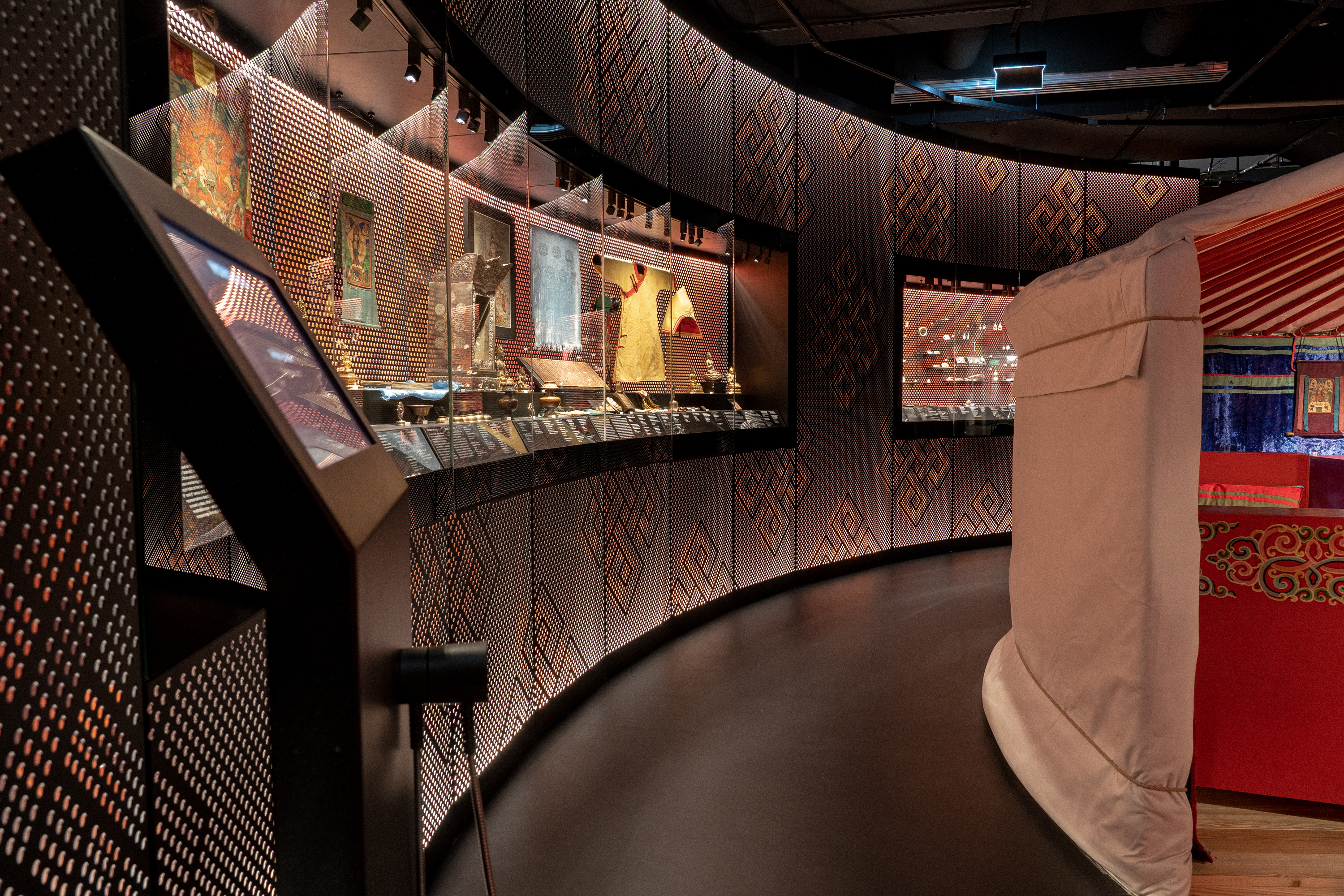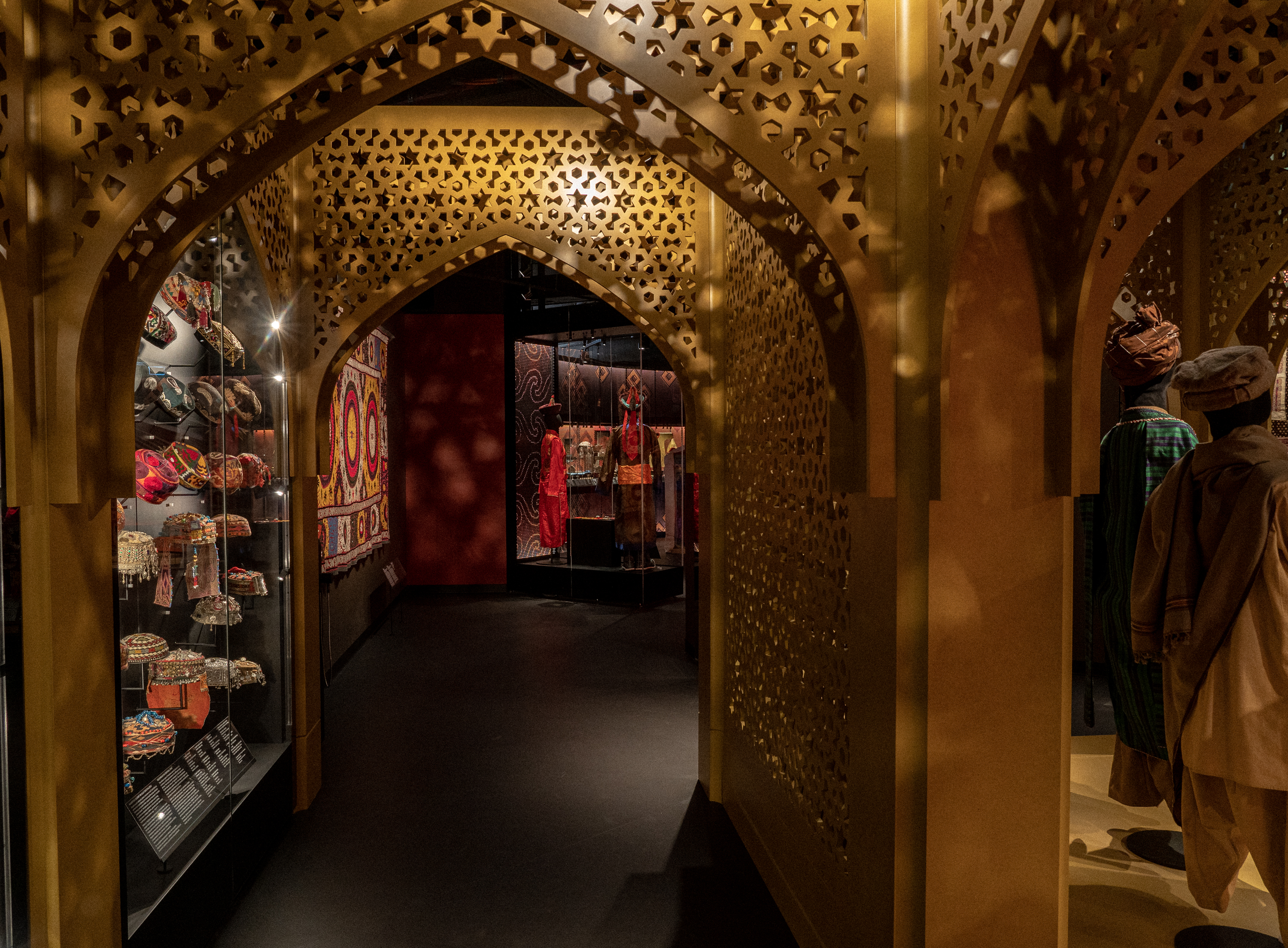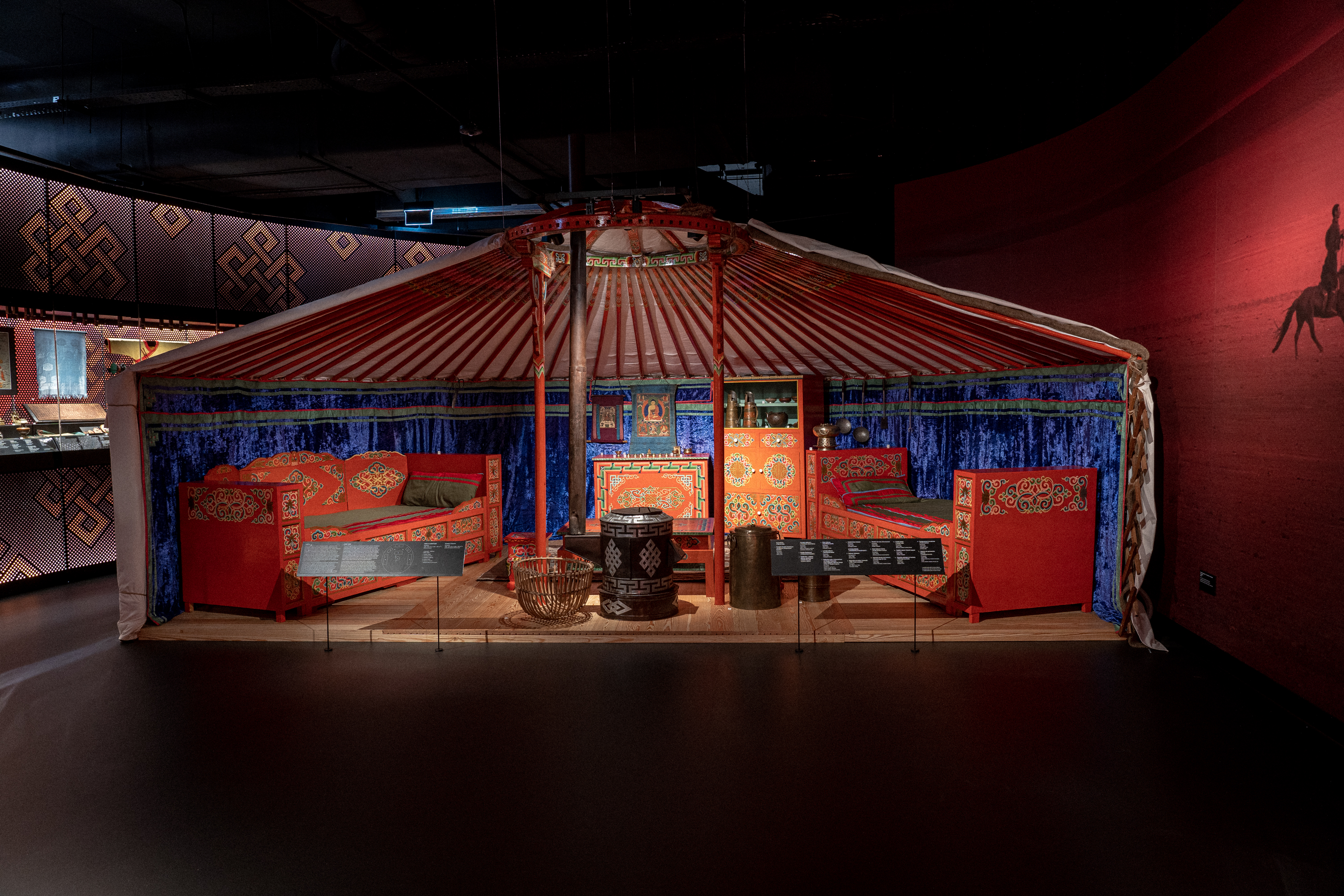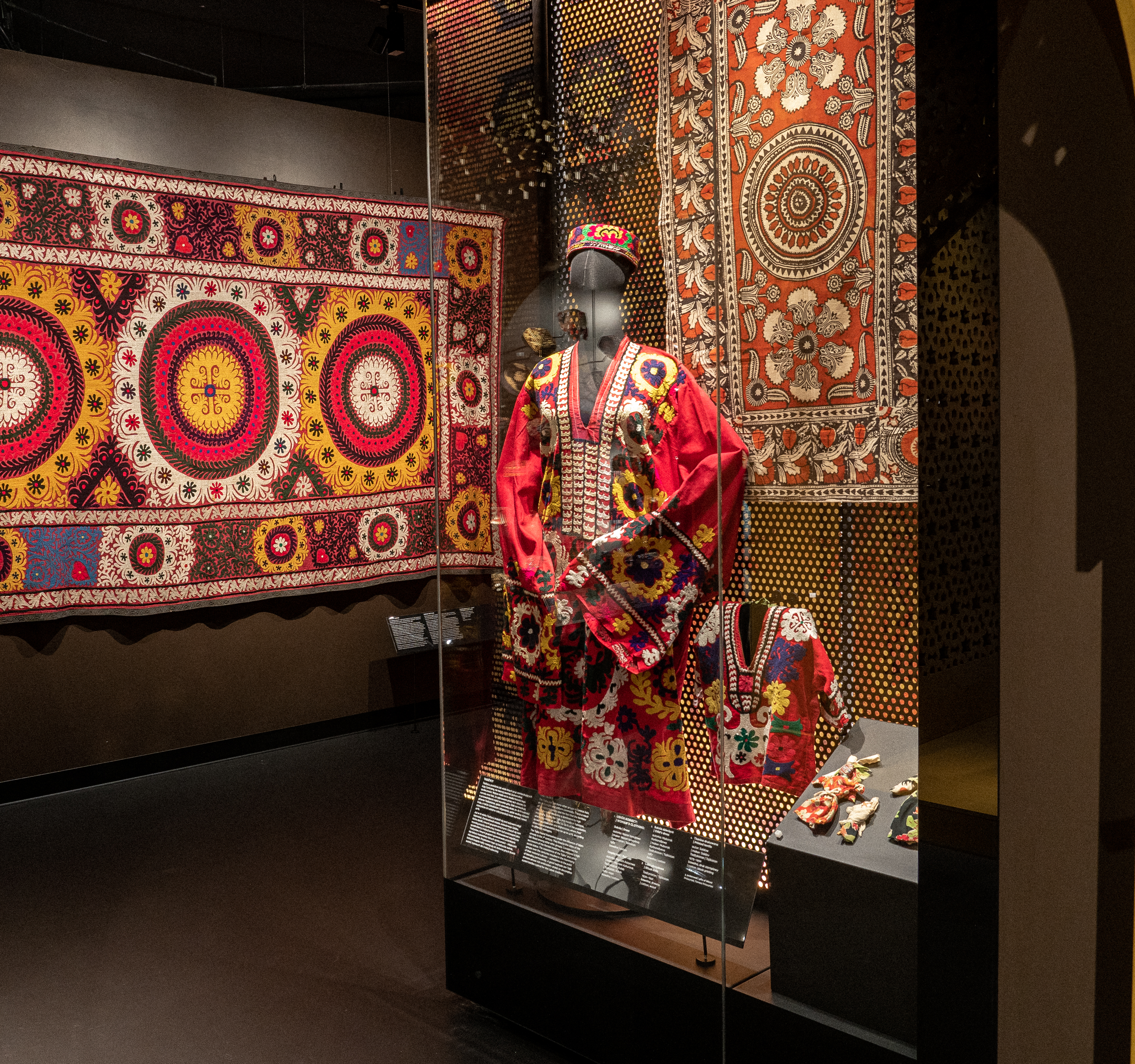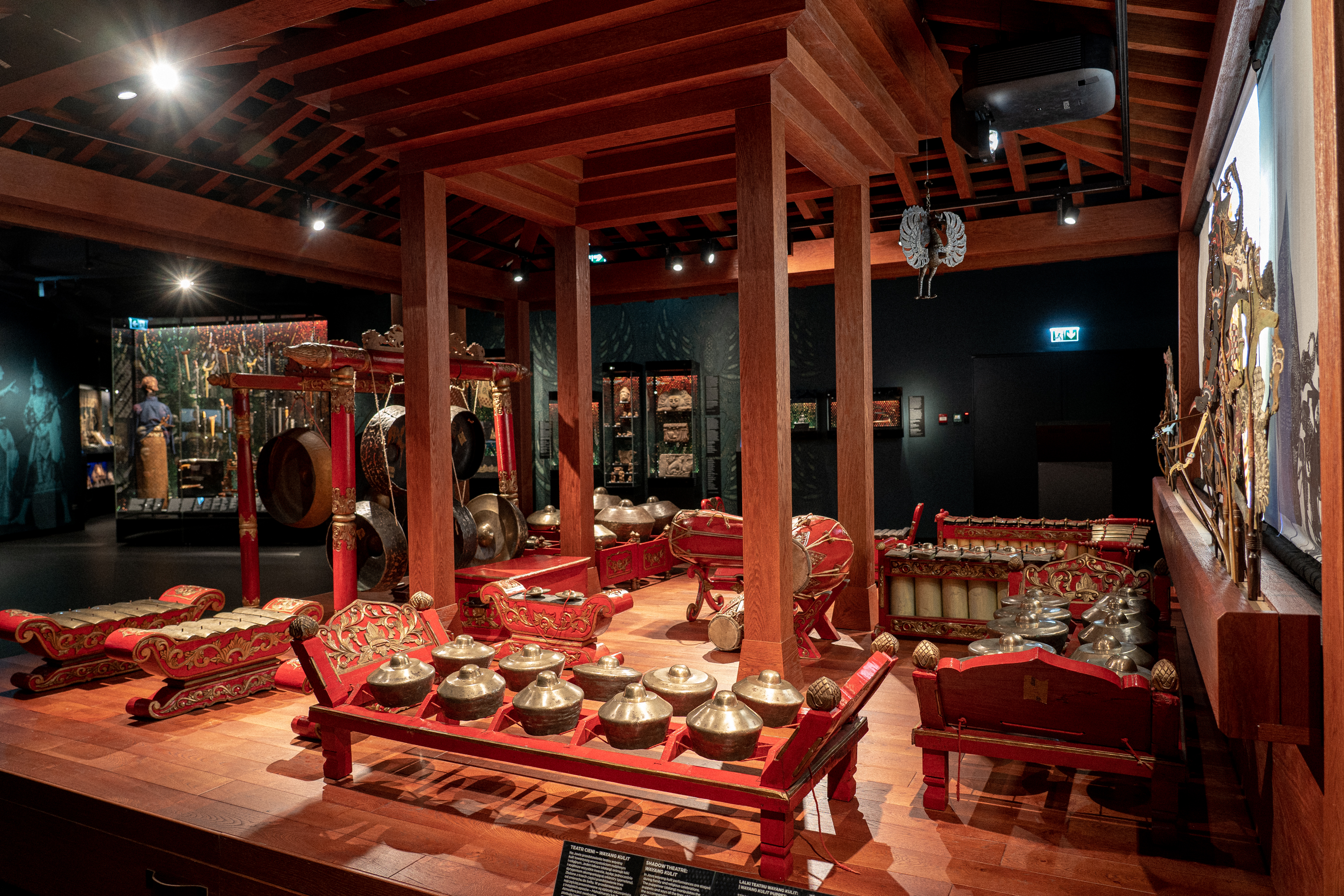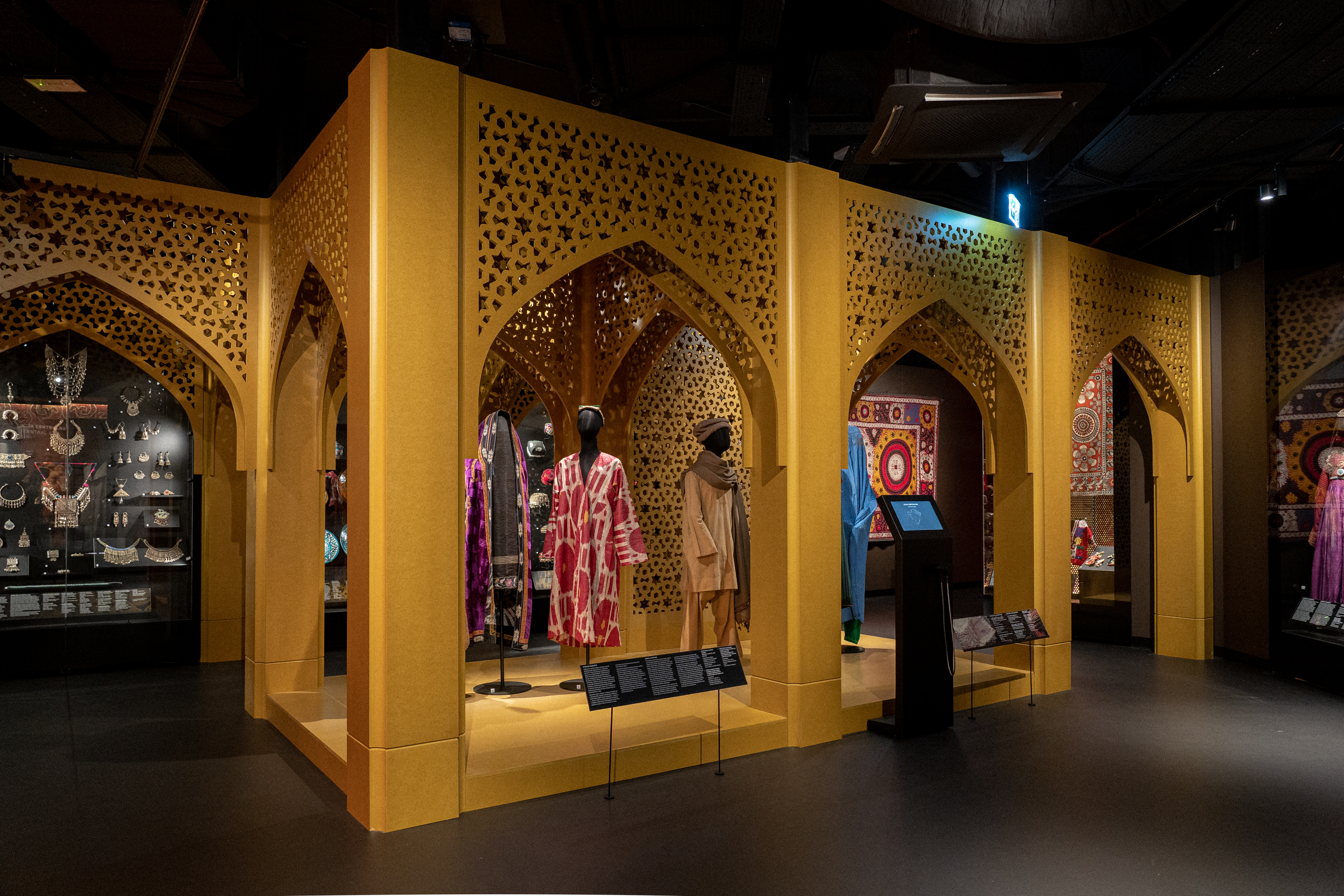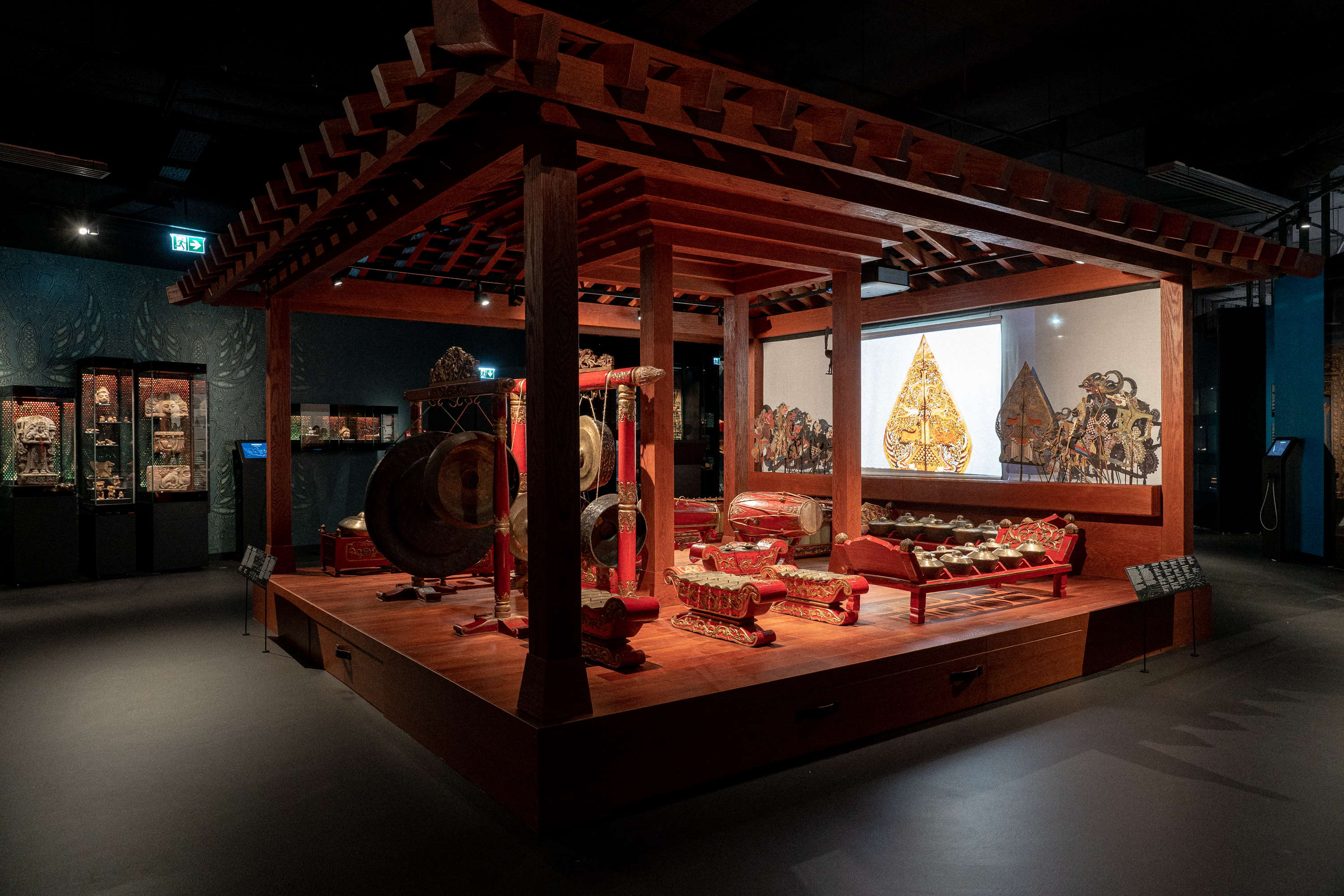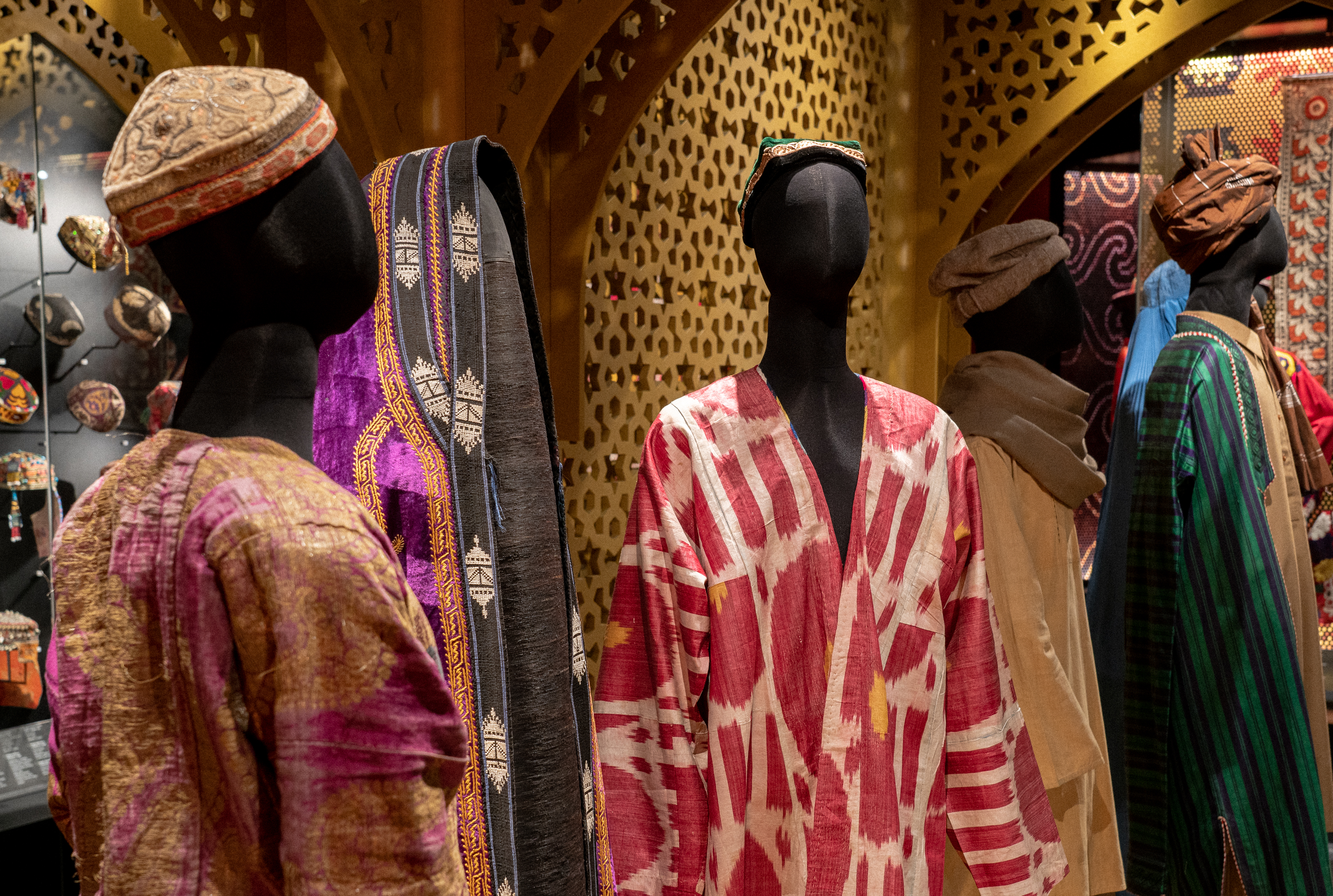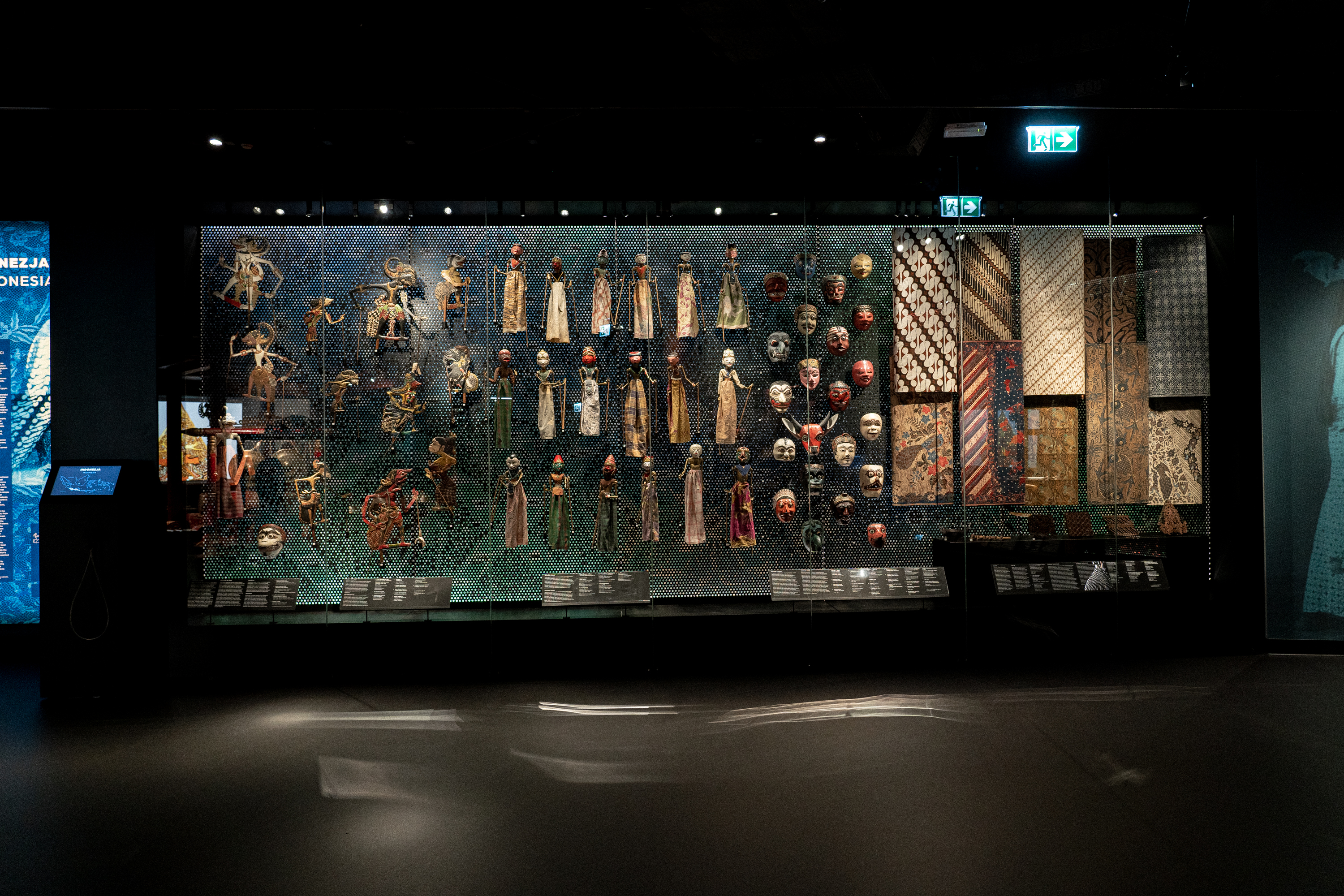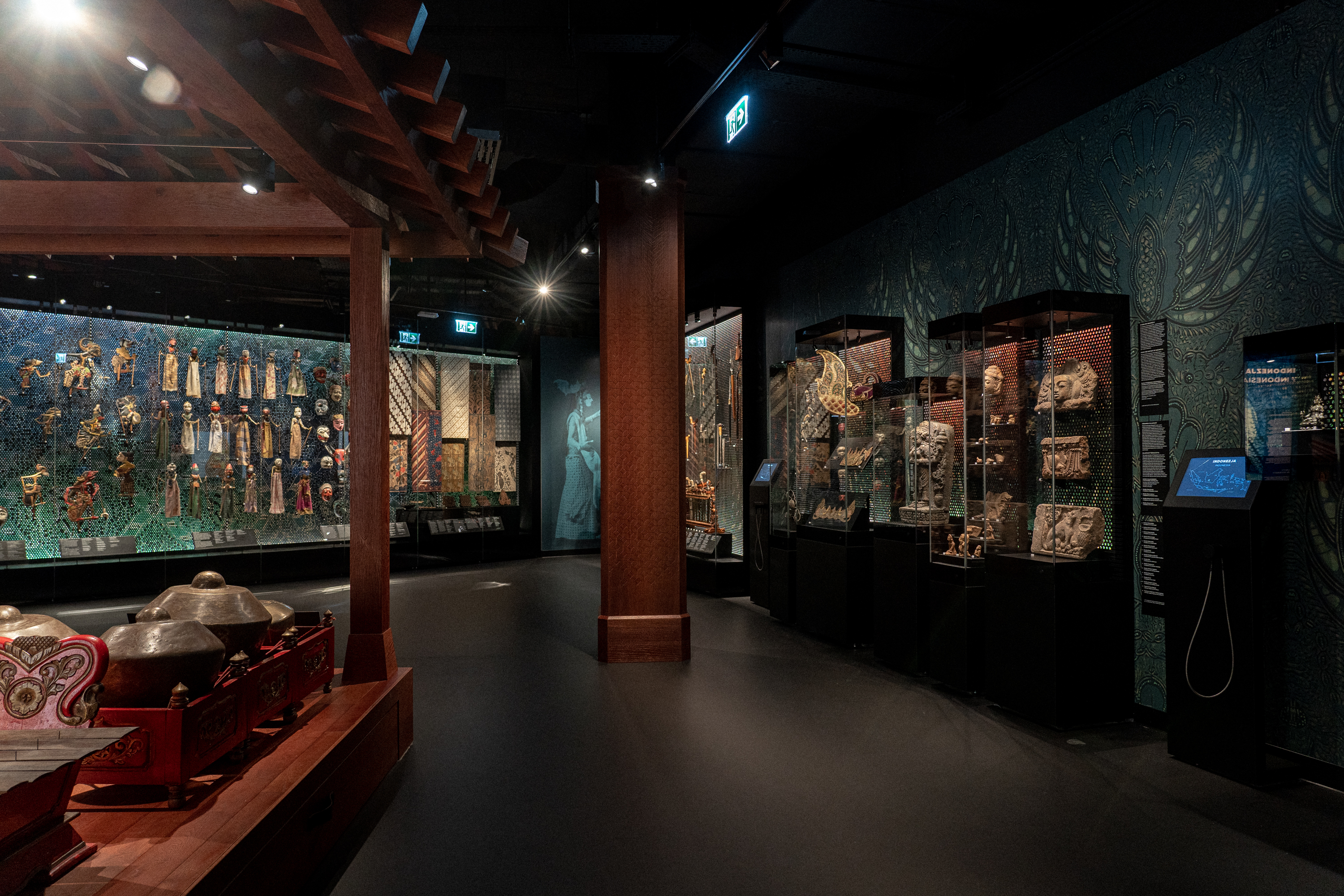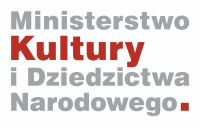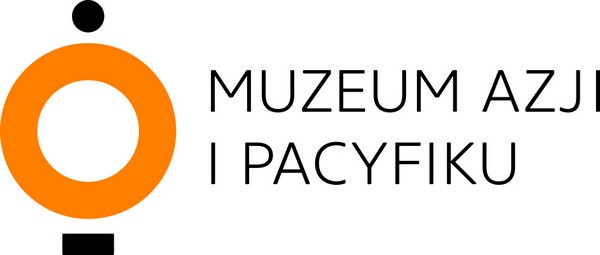PERMANENT EXHIBITION
Completed
Exhibition “Journeys to the east” has been opened just before the 50th anniversary of the founding of the Andrzej Wawrzyniak Asia and Pacific Museum in Warsaw. It enables visitors to come into direct contact with more than 1000 unique artefacts that are impossible to see elsewhere in Poland, providing an exciting insight into the richness and diversity of Asian cultures.
The display features extraordinary artefacts from Arab countries, examples of clothing and painting from the Qajar period from Iran, garments, exquisite jewellery and handicraft from Central Asia, Mongolian objects of practical and sacral use. The most numerous group are exhibits from many islands of Indonesia which include, among others, masks, theater puppets, costumes and traditional cold weapons like krises, which are believed to be endowed with magical powers.
The exhibition is divided into five zones, taking visitors to different parts of the Asian continent.
The first gallery explores the culture of Southwest Asia.
Visit Southwest Asia
The artefacts presented in this part of the exhibition illustrate the centuries-old tradition of the region. Here we find an ancient brick with a cuneiform inscription from the 21st century BC, as well as exhibits related to Arab and Persian culture, which have been influenced by the new religion – Islam since the 7th century.
Next up is a room dedicated to Central Asia.
Visit Central Asia
Here, visitors travel through the cities of the Silk Road and under the arcades of a bazaar characteristic for the Muslim countries of this part of the world. By design, the Central Asian display explores both urban and nomadic cultures. Centuries of coexistence between both of these communities and their multiethnic nature have defined the specific character of the region.
Mongolia, a country mostly covered by the steppe and dessert, is the next stop on the journey.
Visit Mongolia
In this gallery you will find a genuine yurt that once belonged to Mongolian herders complete with all the furnishings. Displayed in the cases around it are objects of practical and sacral use.
Travelling further, we arrive in Indonesia, a country consisting of around 18,000 islands. This is the largest part of the exhibition.
Visit Indonesia
Apart from the most stunning examples of Indonesian masks, cold weapons, garments, and wayang puppets, in this gallery you can circle a Javanese pendopo, a wooden pavilion-like structure where concerts of classical Indonesian gamelan music and shadow play shows were held.
The exhibition ends with a “Sound Zone“, which is a display of 120 musical instruments hailing from different cultural regions and countries of Asia.
Visit ‘Sound Zone’
Visitors can not only see the beautiful instruments in the Museum’s collection, but also listen to some of them, watch videos presenting how they are played, and inspect contemporary and archival photographs documenting Asian musical traditions.
How to visit the exhibition?
It is best to explore “Journeys to the east” with a map.
Get your copy of our special map of the exhibition to make the best of your visit and help you locate the key objects on display.
You can download the map here and print it at home, or collect a copy before entering the exhibition.
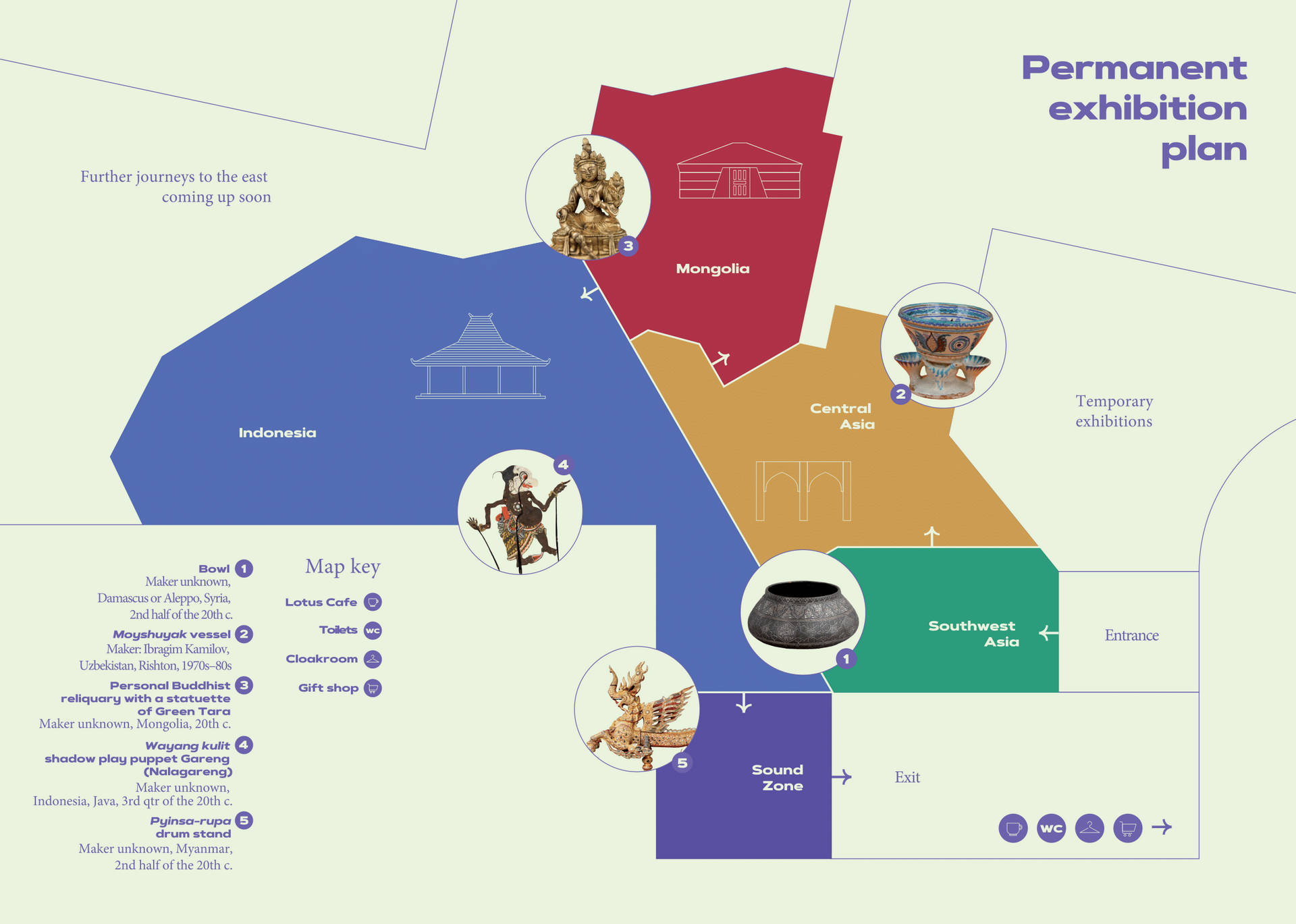
Tickets
Normal ticket – PLN 15
Reduced ticket – PLN 9
Large Family Card holders – PLN 9
The visit
Get ready for the visit.
More information about the Museum’s opening hours, temporary exhibitions, gift shop, Asian Library, and Orient Cafe.
Our Museum is accessible to all. Go to the ‘Accessibility’ section to find out more.
[short spot with no sound with moving graphics]
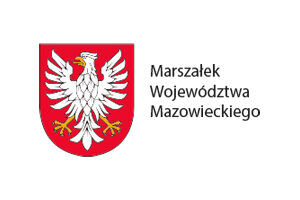

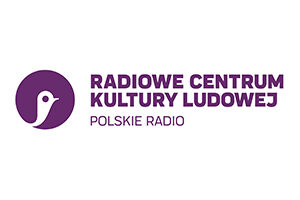




Next stages
The Asia and Pacific Museum’s 40 years of activity has operated with the aim of popularising the countries of Asia and Pacific albeit without a permanent exhibition space. During this period, great effort has been undertaken to raise funds. In 2015, thanks to the support of the Ministry of Culture and National Heritage, the first stage of the permanent exposition got off the ground.
The exhibition will be organised in a new building which the Museum received in 2013, in an area of nearly 1100 m2. The project for this space was prepared by Kłaput Project from Warsaw — the co-designers of the Warsaw Uprising Museum, the sole creators of the Sport and Tourism Museum and the Family House of John Paul II in Wadowice.
CONCEPT OF THE PERMANENT EXHIBITION
The project was based on the idea of a “Journeys to the east” – into the cultural world of Asia and Oceania where the visitor is supposed to enter from the perspective of a European, fresh in from a Warsaw street. The journey begins from the geographically and historically closest countries of the Middle East and then passes through Central Asia, richly represented in the collection with a section on the cultures of the Uzbeks, Turkmen, Tajiks and other people, including ethnically diversified Afghanistan. Next, the trail heads towards the steppe regions of Mongolia and the highlands of Tibet, a land connected by the religious and artistic culture of the Buddhism.
Beyond the symbolic border between the Himalayas and Nepal, India abounds with its rich diversity of colour and Hindu culture. Later, visitors enter the South-East Asia zone, where Hindu religious and artistic influences have left an evident trace. The exhibits here are divided into an extensive section devoted to Burma (Myanma) – the only art collection in Poland of this country presents an extraordinary splendour of sculpture, small architecture and artistic handicrafts – followed by a passage through the area of the Golden Triangle area of Laos, Thailand and Cambodia. Vietnam is next, represented by religious, folk and decorative art. Both paths come together again as they head towards China, focusing on the traditional culture of the late empire and its continuation. A small space inspired by tokonoma is devoted to Japan.
Further on, the Indonesian gallery finally opens up, with a presentation of the largest and the fullest foundation collection amassed by Andrzej Wawrzyniak. Its centrepiece is a pavilion with gamelan instruments – a classical orchestra – and shadow theatre, around which are some arrangements devoted to particular islands of the Archipelago and the most important elements of its cultures. From Indonesia an offshoot leads to an area of the Pacific, specifically Melanesia, totally different from other areas of the exhibition, with collections originating mainly from New Guinea and Vanuatu. The last section will be devoted to the musical cultures of Asia, where instruments will presented together with audio and video records.
This layout will enable the presentation of Asian cultures in a clear geographical arrangement as well as fully displaying the collection of the museum through a selection of the most interesting and valuable objects from the collection which today numbers 23 000 items.
The various areas are diversely designed – the artistic arrangement is supposed to underline the expanse and diversity of the landscapes and cultures of the regions visited during the “journey”. The project includes modern technical solutions that enrich the exhibition with additional visual effects and documentary materials. However, the main emphasis is on contact with authentic objects that are often unique in Poland or even Europe, which for many years had been fragmentarily and temporarily presented to the public.
This work was made possible thanks to a grant from the Minister of Culture and National Heritage.
![grafika z tekstem [journeys to the east]](https://www.muzeumazji.pl/maip/uploads/2022/08/baner_strona_english_tn-1140x220.jpg)

